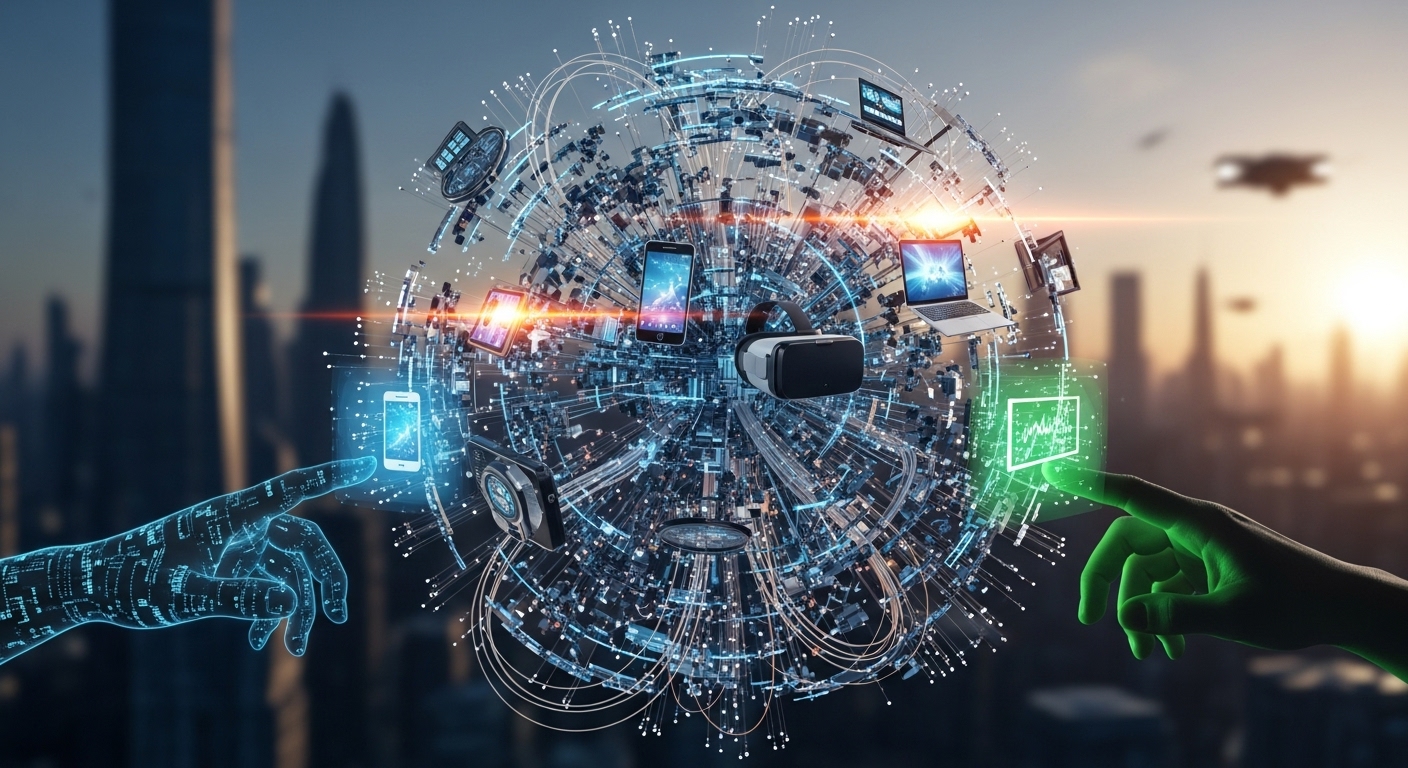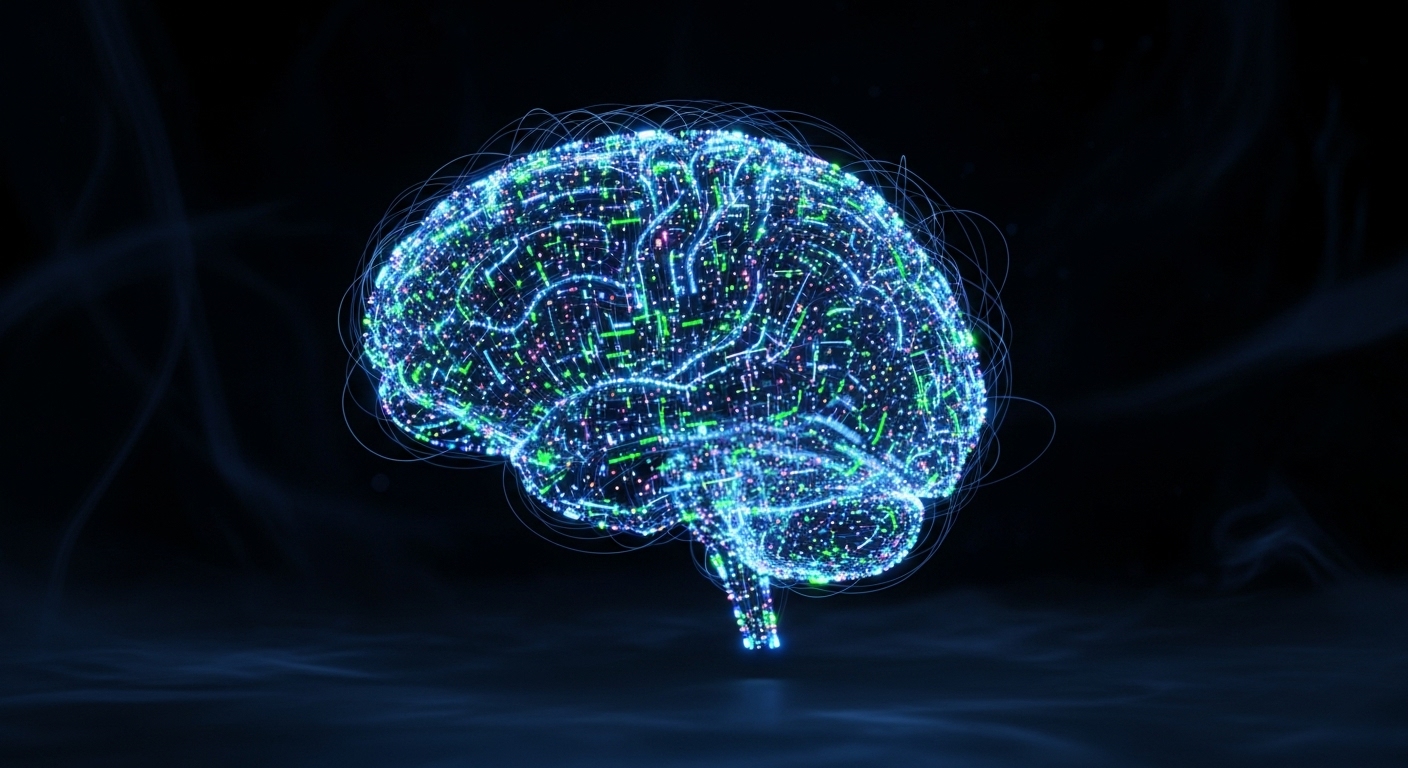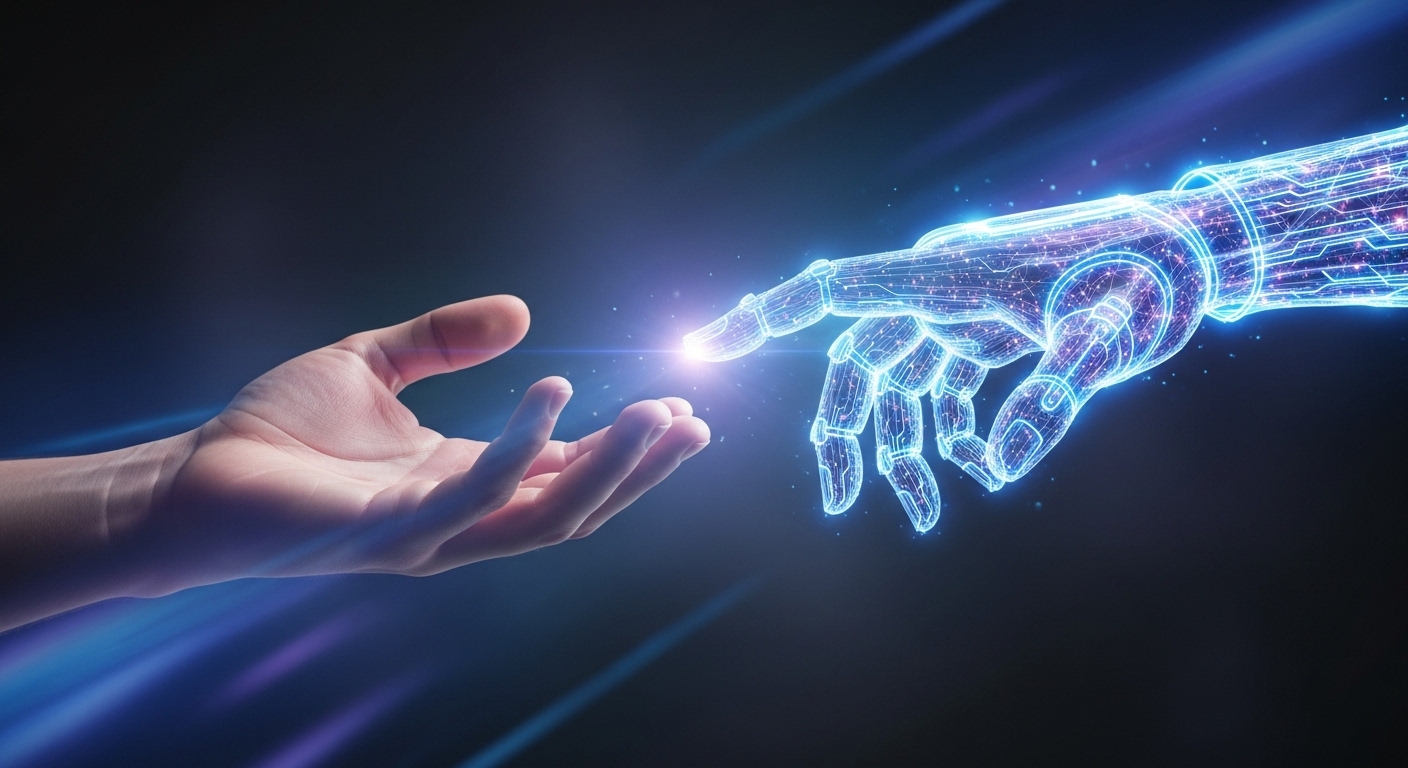Introduction: The Pulse of Human Progress
Technology is the heartbeat of modern civilization. From the moment humankind crafted the first tools from stone, the quest to innovate and improve has driven our species forward. Every generation witnesses its own technological revolution, reshaping the way we live, communicate, work, and dream. In today’s digital age, technology is not merely an instrument; it is the very framework upon which societies are built. Whether it’s artificial intelligence, biotechnology, renewable energy, or quantum computing, technological innovation defines the pace of human advancement.
This blog delves deep into the vast ocean of technology—exploring its evolution, its profound effects on our lives, and its limitless potential for the future.
The Evolution of Technology: From Stone Tools to Supercomputers
The story of technology is the story of humanity itself. The earliest humans relied on crude tools made from stone and bone, but even those primitive inventions marked the beginning of problem-solving and innovation. The invention of fire, the wheel, and metalworking paved the way for early civilizations to thrive.
Fast forward thousands of years, and the Industrial Revolution of the 18th and 19th centuries transformed the world. Steam engines, mechanized textile production, and railways ushered in an era of mass production and urbanization. The telegraph and telephone revolutionized communication, shrinking the world in ways previously unimaginable.
The 20th century was an explosion of invention—electricity, radio, airplanes, computers, and the internet all emerged in rapid succession. Each invention didn’t just improve efficiency but altered the very fabric of society. The 21st century built upon these foundations, creating a hyperconnected, data-driven world where information moves faster than light, and digital technology underpins nearly every human activity.
The Digital Revolution: The Birth of the Information Age
The late 20th century gave rise to one of the most significant turning points in human history: the Digital Revolution. This period saw the birth of personal computers, the internet, and mobile technology. For the first time, information could be stored, processed, and transmitted at unprecedented speeds.
Computers, once enormous and expensive machines reserved for governments and corporations, became accessible to individuals. The development of microprocessors enabled smaller, more powerful machines that could sit on a desk or fit in a pocket. The internet transformed communication, commerce, and education, creating a borderless digital world.
The Information Age democratized knowledge. Search engines, social media, and online education empowered billions to learn, share, and connect. Businesses adapted rapidly, shifting from traditional brick-and-mortar models to digital platforms. From banking to entertainment, technology redefined industries, creating a new global economy rooted in data and connectivity.
Artificial Intelligence: The Brain Behind Modern Innovation
Artificial Intelligence (AI) stands as the most transformative technology of the 21st century. It is not merely a trend but a fundamental shift in how machines interact with the world. AI systems are designed to mimic human intelligence—learning from data, recognizing patterns, and making decisions.
The applications of AI span nearly every industry. In healthcare, AI algorithms assist doctors in diagnosing diseases with greater accuracy. In finance, machine learning models predict market trends and detect fraudulent activities. In transportation, autonomous vehicles are becoming a reality. Virtual assistants, language translators, and recommendation systems have become an integral part of daily life.
Yet, AI is more than automation; it’s augmentation. It enables humans to solve problems once deemed impossible. AI-driven climate models help predict environmental changes. In education, adaptive learning platforms personalize content for students. The power of AI lies in its capacity to analyze massive datasets and derive insights faster than any human ever could.
However, AI also raises ethical and philosophical questions. Who is responsible when an autonomous machine makes a mistake? How do we ensure fairness and prevent bias in AI algorithms? The future of AI must balance innovation with accountability, ensuring that technology remains a force for good.
The Internet of Things: A Connected Universe
The Internet of Things (IoT) extends the power of the internet beyond computers and smartphones to everyday objects. It is the network of connected devices—smart thermostats, wearable fitness trackers, refrigerators, cars, and even cities—that collect and exchange data.
IoT enables a level of automation and efficiency that was once the stuff of science fiction. In smart homes, devices communicate with each other to optimize energy usage, enhance security, and improve convenience. In healthcare, wearable sensors monitor patient health in real-time, alerting doctors to potential issues.
Industries leverage IoT for predictive maintenance, supply chain management, and operational optimization. Smart cities use IoT infrastructure to manage traffic, waste, and energy consumption, making urban living more sustainable.
The challenge, however, lies in ensuring security and privacy. With billions of connected devices, the risk of cyberattacks grows. Building a secure IoT ecosystem requires strong encryption, robust regulations, and responsible design practices.
The Rise of Cloud Computing: Power Without Boundaries
Cloud computing has redefined how we store, access, and manage data. Instead of relying on local servers or personal hardware, cloud technology allows individuals and organizations to store information on remote servers accessible via the internet.
This paradigm shift offers scalability, flexibility, and cost-efficiency. Businesses can expand their operations without investing in expensive infrastructure. Developers can deploy applications globally in minutes. Remote collaboration has become effortless, enabling teams to work across continents seamlessly.
Cloud computing also fuels innovation. Artificial intelligence, big data analytics, and software development all thrive in cloud environments. It provides the computational power needed for AI training and real-time processing, enabling breakthroughs that would have been impossible on traditional systems.
However, dependence on cloud providers raises concerns about data sovereignty and security. As cloud technology evolves, striking a balance between convenience and control will remain a critical challenge.
The Power of Big Data: Turning Information into Insight
Every second, the world generates an astronomical amount of data—from social media posts and online transactions to satellite imagery and sensor readings. Big Data refers to this vast volume of structured and unstructured information, which, when analyzed effectively, reveals patterns, trends, and insights.
Organizations now rely on data analytics to make informed decisions. Governments use it for policy-making, businesses for customer insights, and scientists for discovery. Data-driven decision-making improves efficiency, predicts future outcomes, and enhances customer experiences.
The fusion of Big Data and AI has created powerful predictive models. For example, retailers forecast consumer behavior, healthcare providers predict disease outbreaks, and environmental agencies monitor climate change.
Nevertheless, data privacy remains a growing concern. The misuse or unauthorized access to personal data can lead to serious consequences. Responsible data governance, transparency, and ethical handling of information are essential in this era of digital intelligence.
Cybersecurity: The Digital Shield of the Modern Age
As technology advances, so do the threats that accompany it. Cybersecurity has become one of the most critical aspects of the digital era. With every new innovation—whether in AI, IoT, or cloud computing—comes the risk of cyberattacks, data breaches, and identity theft.
Hackers and malicious actors continuously evolve their tactics, exploiting vulnerabilities in systems and software. Ransomware attacks can cripple entire organizations, while phishing schemes target individuals. Governments, corporations, and individuals alike face the challenge of protecting sensitive information.
To counter these threats, cybersecurity must evolve as fast as technology itself. This involves implementing strong encryption, regular updates, employee training, and advanced threat detection systems. The rise of cybersecurity as a discipline has also created new career opportunities, emphasizing the growing need for digital resilience.
In the future, cybersecurity will increasingly rely on AI-driven defense systems capable of identifying and neutralizing threats in real-time. As our dependence on technology deepens, the importance of digital protection cannot be overstated.
Biotechnology and the Digital Frontier of Life
While digital technology dominates headlines, biotechnology is quietly reshaping life itself. Advances in genetics, bioinformatics, and synthetic biology are merging the physical and digital worlds. The ability to edit genes using tools like CRISPR has opened possibilities for curing genetic diseases, improving crops, and even extending human longevity.
Artificial intelligence plays a vital role in biotechnology by accelerating drug discovery and analyzing complex biological data. Personalized medicine, powered by AI and genetic sequencing, tailors treatments to an individual’s unique genetic makeup.
The integration of technology with biology raises profound ethical and moral questions. What are the limits of human enhancement? Should we manipulate the code of life? These discussions will shape the next century as humans gain more control over the biological world.
The Green Tech Revolution: Technology for a Sustainable Planet
As the planet faces the growing threat of climate change, technology has become a critical tool for sustainability. Green technology, or clean tech, encompasses innovations aimed at reducing environmental impact and promoting renewable energy.
Solar panels, wind turbines, electric vehicles, and energy-efficient systems are leading the charge toward a cleaner future. Smart grids manage electricity more efficiently, while AI-driven systems optimize energy consumption in industries and homes.
Recycling technologies and biodegradable materials are addressing waste management challenges. The concept of a circular economy—where resources are reused and regenerated—relies heavily on technological innovation.
However, true sustainability requires not just invention but intention. Governments, corporations, and individuals must commit to using technology responsibly, ensuring progress does not come at the expense of the planet.
The Future of Work: Automation and the Human Element
The nature of work is undergoing a profound transformation. Automation, robotics, and AI are reshaping industries and redefining what it means to have a career. Routine and repetitive tasks are increasingly handled by machines, allowing humans to focus on creativity, strategy, and emotional intelligence.
Remote work, accelerated by the global pandemic, has become a permanent fixture in many industries. Virtual collaboration tools and digital platforms have turned the world into a global office. At the same time, the gig economy and freelance culture are challenging traditional employment structures.
While automation increases efficiency, it also raises concerns about job displacement. The key to navigating this shift lies in upskilling and reskilling the workforce. Education systems must evolve to prepare future generations for jobs that don’t yet exist.
Ultimately, the future of work will be defined by human adaptability—the ability to coexist with intelligent machines while maintaining the uniquely human traits of empathy, creativity, and critical thinking.
Quantum Computing: The Next Great Leap
Beyond classical computing lies a frontier that could redefine computation itself—quantum computing. Unlike traditional computers that process bits as 0s or 1s, quantum computers use qubits that can exist in multiple states simultaneously. This allows them to perform calculations at speeds unimaginable by today’s standards.
Quantum computing promises breakthroughs in cryptography, drug discovery, climate modeling, and artificial intelligence. Problems that would take supercomputers thousands of years to solve could be completed in seconds.
However, quantum technology is still in its infancy. Building stable quantum systems requires overcoming immense scientific and engineering challenges. But once realized, quantum computing could ignite a technological renaissance unlike anything humanity has ever seen.
The Human Side of Technology: Ethics and Responsibility
Every technological advancement brings power—and with power comes responsibility. As we integrate technology deeper into our lives, ethical considerations become paramount. Issues like privacy, digital addiction, misinformation, and automation-related unemployment demand thoughtful solutions.
Technology should serve humanity, not replace it. Developers, policymakers, and users must prioritize ethical frameworks that guide innovation. This includes ensuring transparency in AI decision-making, protecting user data, and designing technology that enhances human well-being.
The future of technology must be guided not only by what is possible but also by what is right. Innovation without ethics risks creating a world driven by profit and efficiency at the expense of compassion and equity.
Conclusion: The Infinite Horizon of Possibility
The story of technology is far from over—it is an ever-expanding narrative written by humanity’s imagination. From the spark of the first fire to the hum of quantum processors, technology reflects our deepest desires to understand, create, and evolve.
As we stand at the intersection of biology, physics, and digital intelligence, one truth becomes clear: technology is not separate from humanity—it is an extension of it. Our tools mirror our values, our ambitions, and our fears. The challenge ahead is to shape technology that uplifts all of humankind, bridging gaps rather than widening them.
The future belongs not just to the innovators who build, but to the thinkers who question, the dreamers who envision, and the societies that choose to wield technology with wisdom.



